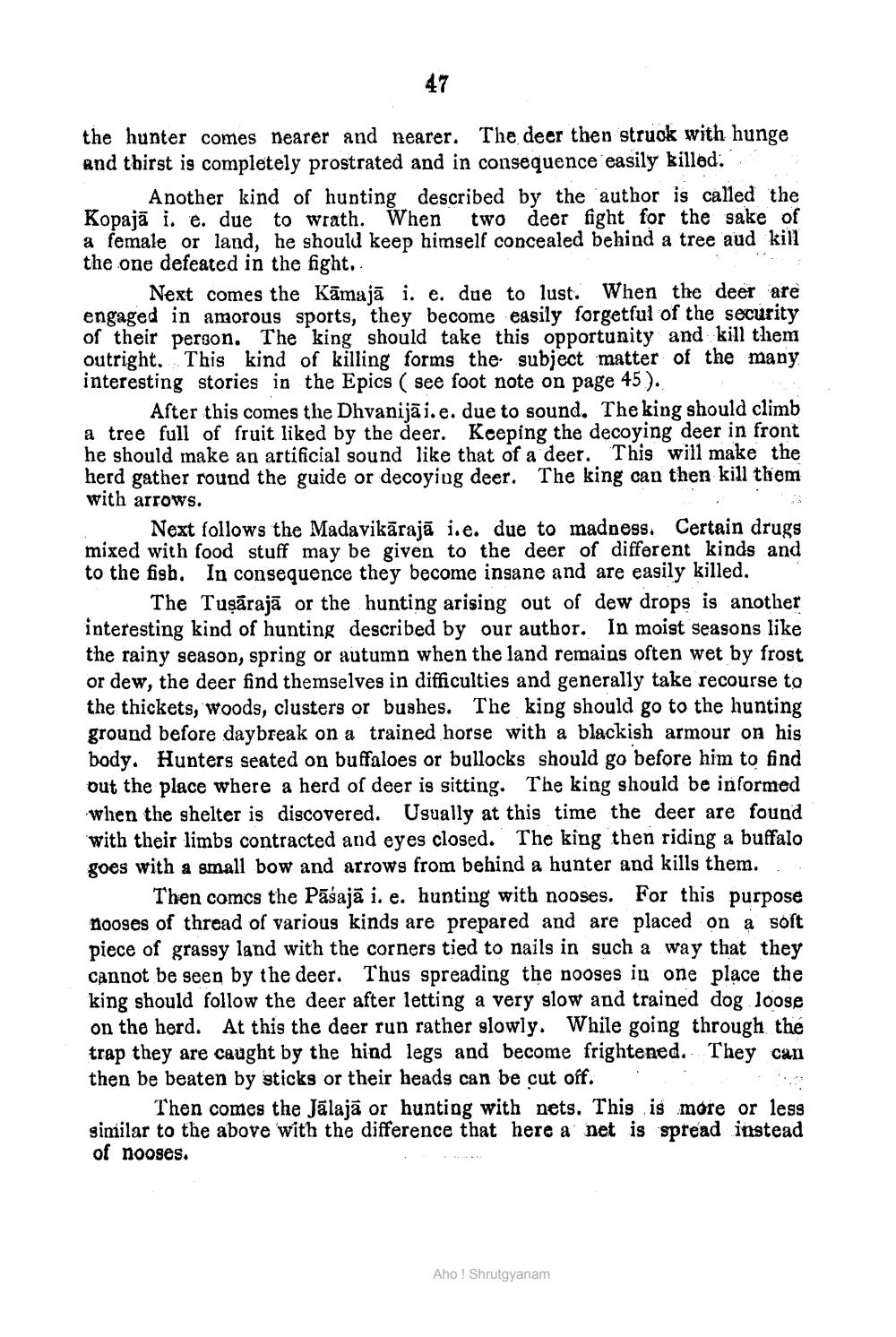________________
47
the hunter comes nearer and nearer. The deer then struok with hunge and thirst is completely prostrated and in consequence easily killed.
Another kind of hunting described by the author is called the Kopajā i. e. due to wrath. When two deer fight for the sake of a female or land, he should keep himself concealed behind a tree aud kill the one defeated in the fight..
Next comes the Kāmajā i. e. due to lust. When the deer are engaged in amorous sports, they become easily forgetful of the security of their person. The king should take this opportunity and kill them outright. This kind of killing forms the subject matter of the many interesting stories in the Epics (see foot note on page 45).
e After this comes the Dhvanijāi.e. due to sound. The king should climb a tree full of fruit liked by the deer. Keeping the decoying deer in front he should make an artificial sound like that of a deer. This will make the herd gather round the guide or decoying deer. The king can then kill them with arrows.
Next follows the Madavikārajā i.e. due to madness. Certain drugs mixed with food stuff may be given to the deer of different kinds and to the fish. In consequence they become insane and are easily killed.
The Tuşārajā or the hunting arising out of dew drops is another interesting kind of hunting described by our author. In moist seasons like the rainy season, spring or autumn when the land remains often wet by frost or dew, the deer find themselves in difficulties and generally take recourse to the thickets, woods, clusters or bushes. The king should go to the hunting ground before daybreak on a trained horse with a blackish armour on his body. Hunters seated on buffaloes or bullocks should go before him to find out the place where a herd of deer is sitting. The king should be informed when the shelter is discovered. Usually at this time the deer are found with their limbs contracted and eyes closed. The king then riding a buffalo goes with a small bow and arrows from behind a hunter and kills them..
Then comes the Pāšajā i. e. hunting with nooses. For this purpose nooses of thread of various kinds are prepared and are placed on a soft piece of grassy land with the corners tied to nails in such a way that they cannot be seen by the deer. Thus spreading the nooses in one place the king should follow the deer after letting a very slow and trained dog loose on the herd. At this the deer run rather slowly. While going through the trap they are caught by the hind legs and become frightened. They can then be beaten by sticks or their heads can be cut off.
Then comes the Jālajā or hunting with nets. This is more or less similar to the above with the difference that here a net is spread instead of nooses.
Aho ! Shrutgyanam




